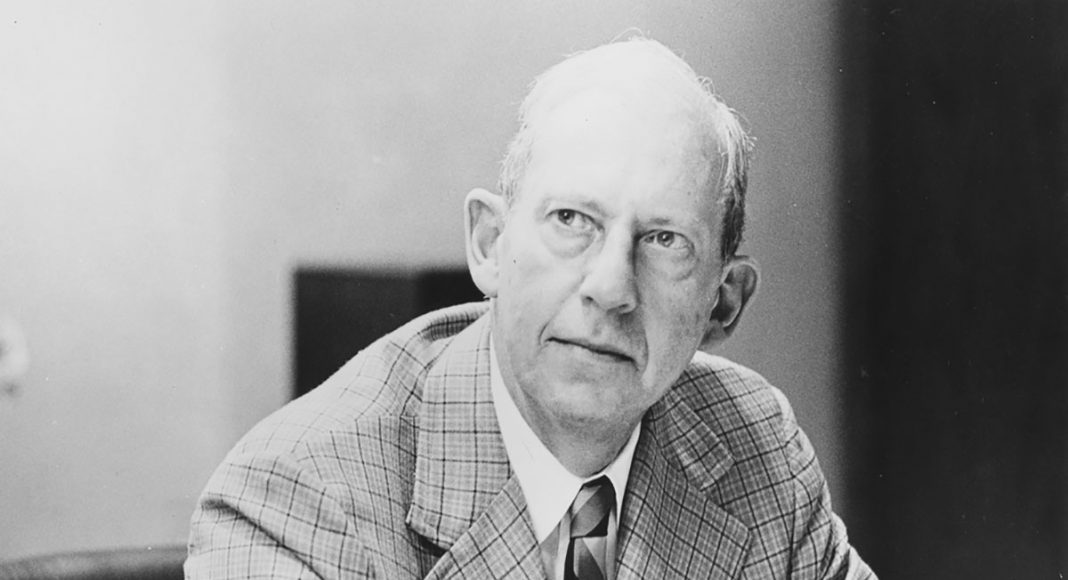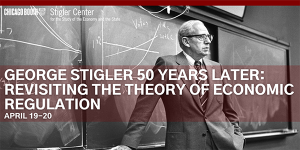George Stigler’s “The Theory of Economic Regulation” has left a lasting impact on the academic and real-world practice of regulatory policy. Fifty years after its publication, we are putting together a symposium to commemorate this landmark article and reassess where his theory stands in today’s world.
Editor’s note: In 1971, George Stigler published his article “The Theory of Economic Regulation.” To mark the 50-year anniversary of Stigler’s seminal piece, we are launching a series of articles examining his theory’s past, present, and future legacy. The series is part of the Stigler Center’s George Stigler 50 Years Later symposium.
For the better part of the 20th century, the majority of economists espoused a very benign view of regulation. Following the great British economist Cecil Pigou, government regulation was seen as the product of a benevolent planner who corrected market failures: from externalities to monopolies, from asymmetry of information to lack of sophistication on the part of consumers and investors. This led to a steady expansion of the regulatory state. The 1887 Interstate Commerce Commission was the first government agency to regulate an important sector of the US economy. By the 1900’s, there were 10 federal agencies, employing 15,000 workers. By 2019, the number of agencies rose to 117, employing 1.4 million workers. The 20th century could easily be labeled the century of regulation.
Most likely, the 20th century would have also ended as the century of regulation if it were not for George Stigler. Exactly fifty years ago, Stigler published “The Theory of Economic Regulation” in the Bell Journal of Economics and Management Science. The academic and real-world practice of regulatory policy has not been the same ever since.
The inspiration for the path-breaking article came from his study of electric utility regulation conducted with Claire Friedland, where they found no evidence that electricity regulation benefitted consumers through lower prices. In his 1971 article, Stigler then followed suit by asking two simple questions: if regulation fails in the very purpose it was created for, why does it exist and, most importantly, why does it persist? Stigler’s well-known answer was that regulatory activity is not just driven by attempts to increase welfare, but also by the self-interest of the very players that are subject to it.
That was a groundbreaking insight. As the motivation for his Nobel Prize rightly emphasized, “his studies of the forces which give rise to regulatory legislation have opened up a completely new area of economic research.” While accurate at the time, this statement was also prescient—by 1982, Stigler’s powerful ideas were just starting to impact the world. Since then, the academic interest in “regulatory capture” has sky-rocketed, as documented by this Google N-Gram of the use of the term in books published in English.
Today, with Facebook asking to be regulated, private prisons lobbying for longer mandatory sentences, and Hewlett Packard pushing for stricter environmental controls as a way to raise its rivals’ cost, it is difficult to conceive of a time when regulation was considered the sole product of a benevolent planner. This is the best evidence of Stigler’s lasting impact.
Stigler’s core argument—that self-interested, politically powerful private agents may shape governmental action to protect their interests at the expense of the common good—is so compelling, and the evidence of political distortions is so overwhelming, that it is tempting to conclude that regulatory cures are always worse than the underlying disease. However, while this is certainly true in some cases, it is not true in all cases. As we see it, Stigler’s enduring legacy was opening the door for the political analysis of regulation, not providing a definitive answer on how societies should shape their markets and political processes. Starting with Sam Peltzman, the economic and legal literatures are constantly engaging with the question of how to design regulatory systems that promote welfare while fending off undue external influences. While much progress has been made, the literature still struggles to provide answers.
On the occasion of the 50th anniversary of “The Theory of Economic Regulation,” the Stigler Center has organized a two-day symposium with some of the best minds in the field. The symposium will be held virtually on April 19 and 20, 2021. The first day will celebrate the theory’s enduring impact in academia and beyond, bringing together different generations of renowned scholars to discuss how Stigler’s views impacted their work. The second day will focus on how the Theory of Economic Regulation should progress to reflect today’s market environment and political dynamics, as well as how to design regulatory frameworks and institutions to counter the influence of powerful interest groups. We have also invited a series of scholars to write some reflections on Stigler’s groundbreaking insights—these will be published here in ProMarket in the coming weeks.
In his Nobel Memorial Lecture—a piece well-worth reading called “The Process and Progress of Economics”—Stigler discussed the need for scientific fields to have a set of fundamental and durable problems that are constantly re-assessed and challenged over time. In this spirit, we cannot think of a better way to commemorate Stigler’s lasting contribution than to reassess and challenge where The Theory of Economic Regulation stands today.







